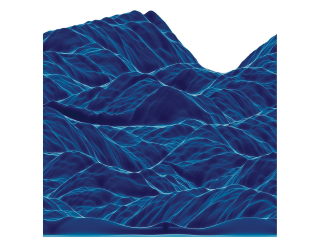Séminaire : Jean-François Molinari
Ajouter au calendrierRichness and complexity of sliding events at a frictional interface
Thibault Roch 1, Efim Brener 3,4, Eran Bouchbinder 2, and Jean-Francois Molinari*1
1 Civil Engineering Institute, Materials Science and Engineering Institute, Ecole Polytechnique Fédérale de Lausanne, Station 18,CH-1015 Lausanne, Switzerland
2 Chemical and Biological Physics Department, Weizmann Institute of Science, Rehovot 7610001, Israel
3 Peter Grünberg Institut, Forschungszentrum Jülich, D-52425, Germany
4 Institute for Energy and Climate Research, Forschungszentrum Jülich, D-52425, Germany
Frictional rupture is common in the technological and natural world, from squeaking brake pads to earthquakes along geological faults. A general framework for understanding and interpreting frictional rupture commonly involves an analogy to ordinary crack propagation. An important feature of the analogy to cracks is the existence of a reduction in the stress-bearing capacity of the ruptured interface, which means a drop from the applied stress realized far ahead of a propagating rupture to the residual stress left behind it. However, this analogy is far from obvious since the residual stress does not drop to zero for frictional ruptures. Additionally, frictional systems can host slip pulses, which are a rupture mode that is fundamentally different from the classical representation of a crack. It is not yet clear how and under what conditions the very same frictional system can feature both crack-like rupture and slip pulses.
In the first part of this talk, we show that stress drops in frictional rupture are related not only to the physics of the contact interface but also to wave radiation and long-range bulk elastodynamics [1]. The emergence of a stress drop is a transient effect affected by the wave travel time. Once the necessary conditions for an effective crack-like behavior are met, frictional rupture dynamics can be described by a crack-like fracture mechanics energy balance equation [2].
In the second part of this talk, we show that homogeneous rate-and-state dependent frictional systems of infinite width with respect to the sliding direction, and driven at a prescribed boundary velocity (as opposed to a prescribed stress) in a range where the frictional interface is rate-weakening, generically host self-healing slip pulses [3]. Such velocity-driven frictional systems are then shown to exhibit coarsening dynamics saturated at the system length in the sliding direction, leading to steadily propagating pulses. The latter may be viewed as a propagating phase-separated state, where slip and stick characterize the two phases. The single pulse properties are comprehensively understood using a crack-like fracture mechanics energy balance equation.
Finally, we study slip complexity in finite-size frictional systems and show that it emerges in the presence of elasto-frictional instabilities and wave reflections from finite boundaries, even without material disorder [4]. The slip events have broad statistical distributions and can be classified into two types, with small non-propagating events following a power-law distribution, and large propagating events following a log-normal distribution. The complexity arises from self-generated stress and interfacial heterogeneity, leading to spatiotemporal complexity and intricate interactions between slip events, the interface state and its history, and triggering/arrest effects mediated by wave reflections from finite boundaries.
[1] F. Barras, M. Aldam, T. Roch, E. A. Brener, E. Bouchbinder, and J.-F. Molinari, “Emergence of cracklike behavior of frictional rupture: The origin of stress drops,” Physical Review X, vol. 9, p. 041043, 2019.
[2] F. Barras, M. Aldam, T. Roch, E. A. Brener, E. Bouchbinder, and J.-F. Molinari, “The emergence of crack-like behavior of frictional rupture: Edge singularity and energy balance,” Earth and Planetary Science Letters, vol. 531, p. 115978, 2020.
[3] T. Roch, E. A. Brener, J.-F. Molinari, and E. Bouchbinder, “Velocity-driven frictional sliding: Coarsening and steady-state pulses,” Journal of the Mechanics and Physics of Solids, vol. 158, p. 104607, 2022.
[4] T. Roch, E. A. Brener, J.-F. Molinari, and E. Bouchbinder, “A finite geometry, inertia assisted coarsening-to-complexity transition in homogeneous frictional systems”, In preparation, 2024.

